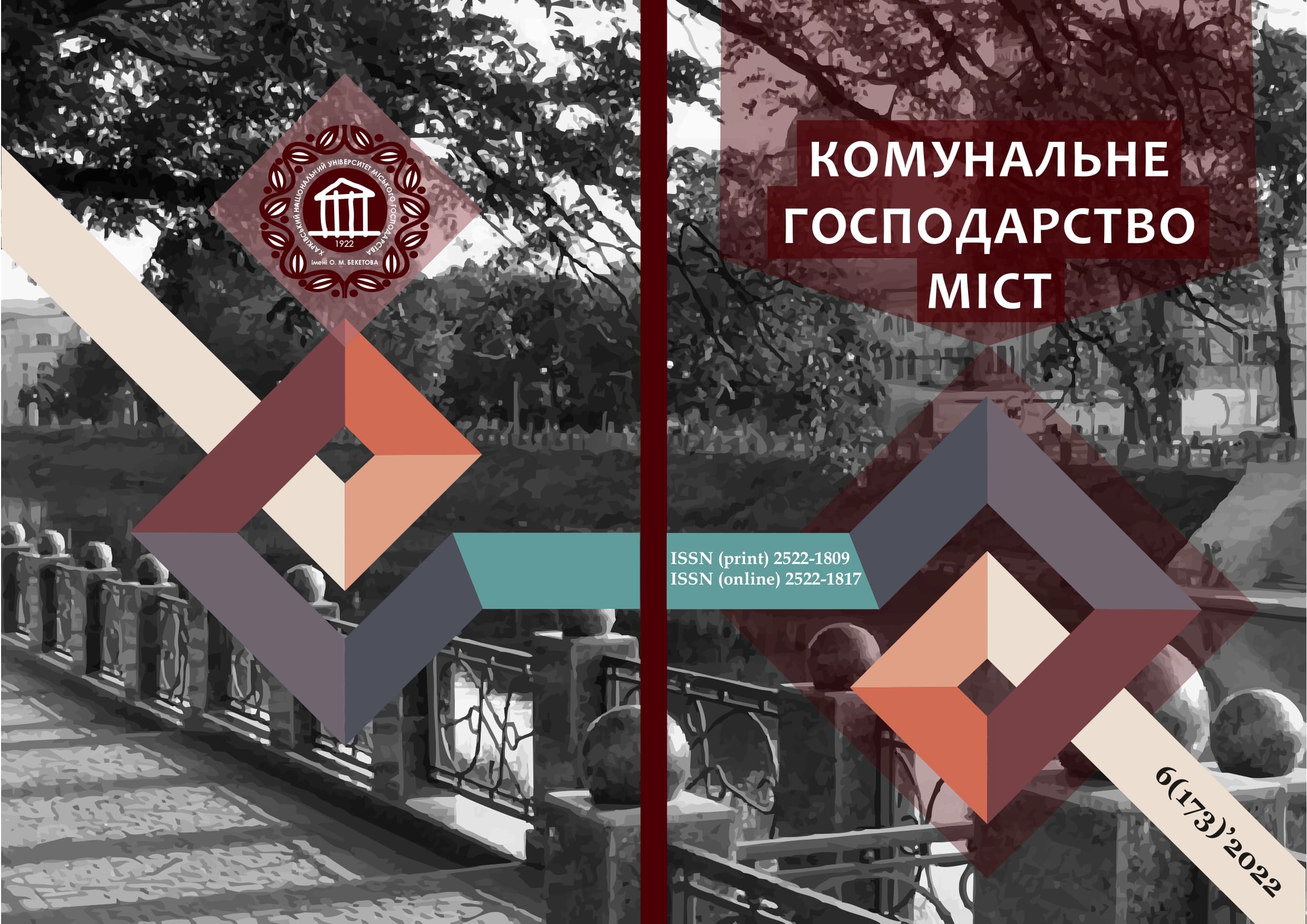EXPERIENCE OF OBTAINING INITIAL DATA FROM GOOGLE EARTH TO BUILD A DIGITAL TERRAIN MODEL
DOI:
https://doi.org/10.33042/2522-1809-2022-6-173-96-100Keywords:
Google Earth, systematic measurement errors, digital model of the situation, distance measurementAbstract
The Google Earth system is widely available, which allows to collect geographic spatial information both on a commercial basis and for own needs.
Geodetic measurements are accompanied by measurement errors, they are divided into rough, systematic and random. Systematic errors always distort the measurement result in any direction. Systematic errors are tried to be eliminated by introducing amendments. The analysis of publications shows that the question of obtaining data from the Google Earth system has interested many researchers. Some came to the conclusion that it makes no sense to use geospatial height data, but the use of 2-D data requires research. The relevance is substantiated.
The purpose of this article is to confirm the hypothesis that the Google Earth system provides precisely the systematic errors in finding distances so that by introducing linear corrections it is possible to increase the accuracy of linear measurements in this system.
The order of the experiment:
1) to take several places (territories) located in different parts of the country;
2) in the Google Earth, to find objects with clear contours near the experimenter's location;
2) to measure distances using the Google Earth;
3) to take screenshots of the measured areas;
4) to measure the distance with a tape measure;
5) to calculate the difference;
6) to repeat the experiment in another part of the territory;
8) to calculate the arithmetic mean (using MS Excel);
9) to calculate the standard deviation (using MS Excel).
Three territories located in the northern part of eastern Ukraine were considered. 10 experiments were carried out in each territory.
The hypothesis (that the Google Earth system gives systematic errors in finding distances) has been proven. Now, through the introduction of linear corrections, it is possible to increase the accuracy of linear measurements in this system.
References
Explore Google Earth. Official site. Retrieved from: https://www.google.com.ua/intl/ru/earth/ . – 1.11.2022.
Telnov, V. G. (2019) Geodesy : academic. manual. Dnipro: NTU, 317 p.
Musіienko, І.V., Kazachenko L.M., Zaharova E.V. (2021) Analysis of Google Earth altitude errors for use in geodesic works. Municipal economy of cities. №3(163). P. 47 – 51.
El-Ashmawy, Khalid L.A. (2016) Investigation of the accuracy of Google Earth. Artificial satellites. №51(3). DOI: 10.1515/arsa-2016-0008. Retrieved from: https://sciendo.com/pdf/10.1515/arsa-2016-0008. – 1.11.2022.
Zonum Solution. Retrieved from: http://www.zonums.com/gmaps/terrain.php?action=sample. – 1.11.2022.
Chigbu N., Okezie M., Arungwa I.D., Ogba C. (Nigeria) (2019) Comparative Analysis of Google Earth Derived Elevation with In-Situ Total Station Method for Engineering Constructions (10129). Geospatial information for a smarter life and environmental resilience. Hanoi, Vietnam, April 22–26, 2019. Retrieved from: https://sciendo.com/pdf/10.1515/arsa-2016-0008. – 1.11.2022.
Bryl', S.V., Zver'kov M.S. (2021) Creation of a digital relief model of an reclamation object based on remote sensing data. Sistemnye tekhnologii. №4 (41). P. 37-42. Retrieved from: https://cyberleninka.ru/article/n/sozdanie-tsifrovoy-modeli-reliefa-meliorativnogo-obekta-po-dannym-distantsionnogo-zondirovaniya-zemli . – 1.11.2022.
GPS Visualizer. Retrieved from: https://www.gpsvisualizer.com/ . – 1.11.2022.
Free open source geographic information system QGIS. Retrieved from: https://www.qgis.org/ru/site/. – 1.11.2022.
Pilipyuk, R.G. (2002) Geodetic coordinate systems and transformation : Otchyot po nauchno - issledovatel'skoj rabote. Ivano-Frankovsk: Predpriyatie «Geoinformcentr», 48 p.
Gafurov, Z.A., Eltazarov S.B., Akhmedova T.A. (2018) Crop classification in Karshi steppe using remote sensing information and Google earth engine tool. European science review. №9-10-1. P. 130-132. Retrieved from: https://cyberleninka.ru/article/n/crop-classification-in-karshi-steppe-using-remote-sensing-information-and-google-earth-engine-tool . – 1.11.2022..
Papaiordanidis, S., Gitas I.Z., Katagis T. (2019) Soil erosion prediction using the Revised Universal soil loss equation (rusle) in Google Earth Engine (Gee) cloud-based platform. Byul. Pochv. in-ta. № 100. P. 36-52. Retrieved from: https://cyberleninka.ru/article/n/soil-erosion-prediction-using-the-revised-universal-soil-loss-equation-rusle-in-google-earth-engine-gee-cloud-based-platform . – 1.11.2022.
Grigoryuk, A.P., Braginskaya L.P. (2008) Web mapping experience based on Google Maps. Interekspo Geo-Sibir'. №2. S. 291-293. Retrieved from: https://cyberleninka.ru/article/n/opyt-veb-kartografirovaniya-na-osnove-servisa-google-maps . – 1.11.2022.
Musіienko І.V., Kazachenko L.M. (2022) Experience of obtaining initial data from Google Earth to build a digital terrain model. Municipal economy of cities. №3(170) . P. 247 – 251.
Downloads
Published
How to Cite
Issue
Section
License
The authors who publish in this collection agree with the following terms:
• The authors reserve the right to authorship of their work and give the magazine the right to first publish this work under the terms of license CC BY-NC-ND 4.0 (with the Designation of Authorship - Non-Commercial - Without Derivatives 4.0 International), which allows others to freely distribute the published work with a mandatory reference to the authors of the original work and the first publication of the work in this magazine.
• Authors have the right to make independent extra-exclusive work agreements in the form in which they were published by this magazine (for example, posting work in an electronic repository of an institution or publishing as part of a monograph), provided that the link to the first publication of the work in this journal is maintained. .
• Journal policy allows and encourages the publication of manuscripts on the Internet (for example, in institutions' repositories or on personal websites), both before the publication of this manuscript and during its editorial work, as it contributes to the emergence of productive scientific discussion and positively affects the efficiency and dynamics of the citation of the published work (see The Effect of Open Access).

